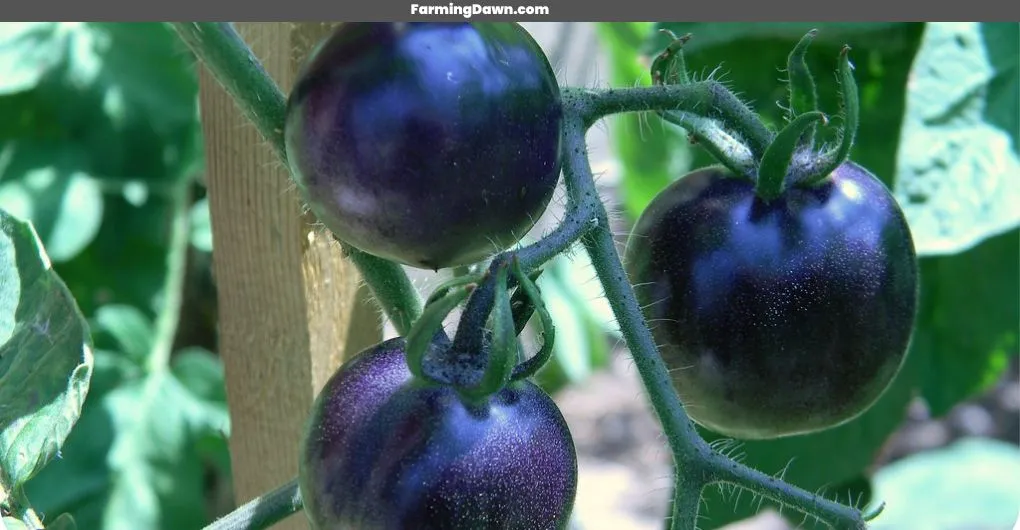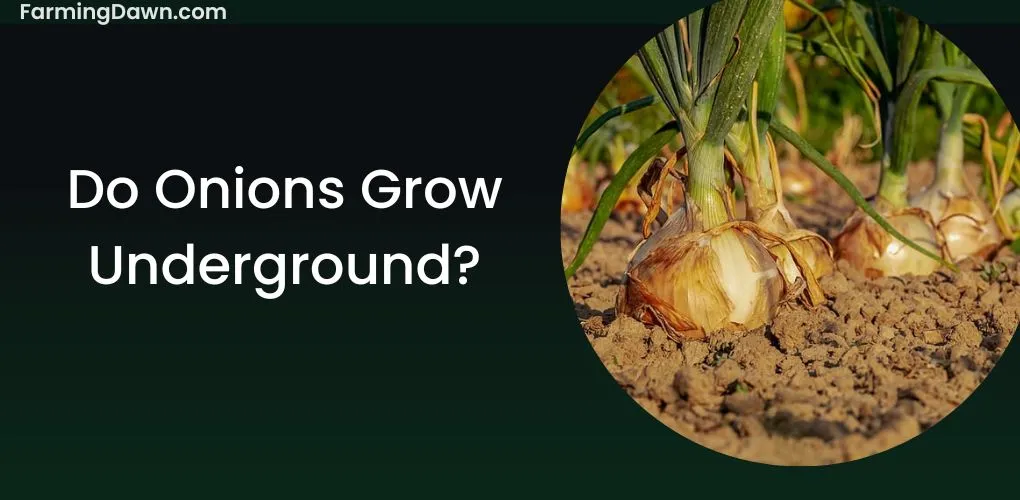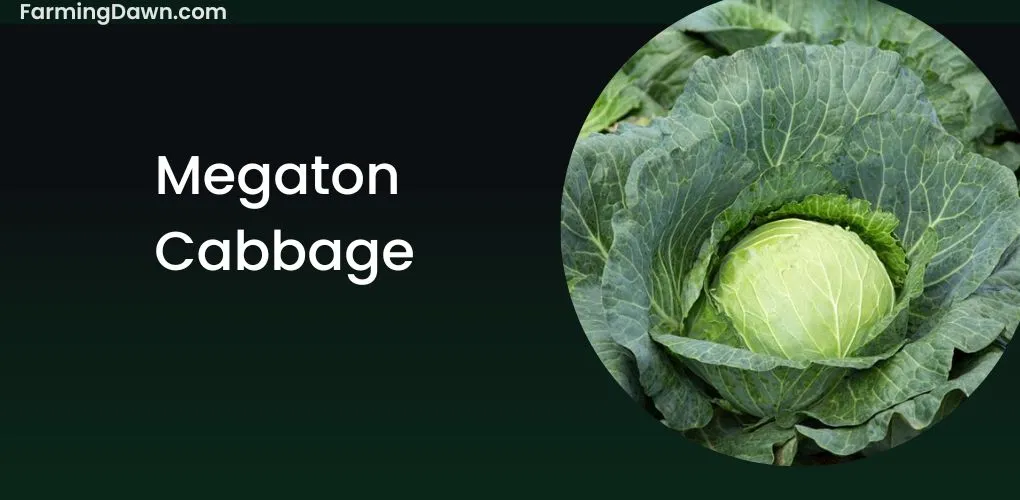The Black Cherokee Tomato is a unique and useful addition to any veggie garden. This heritage tomato has become well-liked by both gardeners and chefs because of its delicious, smoky flavor and alluring dark shell.
To help you get the most out of this tasty and unique variety, I will shed light on the Black Cherokee Tomato’s history, growing advice, and a few culinary applications. I will also compare this with other different tomatoes.
Black Cherokee Tomato
One of the most useful and well-liked plants in a backyard garden is the tomato and with good reason. They are simple to grow, nutrient-rich, and available in various hues and forms. The Black Cherokee tomato is undoubtedly an unusual and delectable addition to your garden.
The Black Cherokee tomato is a heritage type that has been raised for over a century. It is well-known for its deep, black color and sweet, rich flavor. The Black Cherokee tomato has a spherical, somewhat flattened fruit with a glossy, nearly black surface.
History and Origins of the Black Cherokee Tomato
Black Cherokee has grown in favor among foodies and gardeners alike since it was originally discovered in the Appalachian Mountains of North Carolina in the early 1900s.
The Black Cherokee Tomato’s name is derived from the Cherokee Native American tribe, known to have existed for millennia in the Appalachian Mountains. The tomato is said to have been created by the Cherokee people as a cherished staple crop that was passed down from father to son.
What is the best-tasting black tomato?
Depending on individual preference, different black tomatoes may have the best flavor. However, the following are frequently regarded as having an excellent flavor. But in my view, from what I have grown and eaten, these are my personal favorites:
- Black Krim
- Indigo Rose
- Black Sea Man
- Purple Cherokee
Characteristics of the Black Cherokee Tomato
The rare tomato stands out from other tomato plants thanks to its unique traits.
- Color
The Black Cherokee tomato has a rich, dark shade that is practically black, as its name suggests. High concentrations of anthocyanins, a pigment also present in blueberries and blackberries, are responsible for their color.
- Flavor
The Black Cherokee tomato is a terrific complement to salads, sandwiches, and sauces thanks to its rich, sweet, and slightly acidic flavor.
- Disease Resistance
Due to the Black Cherokee tomato’s excellent level of disease resistance, it is a fantastic choice for gardeners who battle with ailments like blossom end rot, early blight, and Septoria leaf spot.
- Fruit Dimensions
The Black Cherokee tomato produces huge fruit that weighs 8 to 12 ounces on average. This makes it an excellent choice for those looking to raise tomatoes for canning or preserving.
- Growing Environments
The sturdy Black Cherokee tomato may thrive in a range of environments. It may be cultivated in the ground or containers and does well in warm areas.
How Tall Do Black Cherokee Tomatoes Grow?
Black Cherokee tomatoes typically grow to heights between 6 to 10 feet tall. They have an indeterminate habit, meaning that they will continue to grow and produce fruit until they are affected by frost or extreme weather conditions.
The plant produces large clusters of tomatoes that can get up to 8 ounces, making them an excellent choice for canning or making sauces. The plant has a high resistance to disease and can withstand some of the harsher climates.
It is also drought-tolerant, making it a great choice for areas that experience dry summers. When grown in a warm climate, the tomato will produce an abundance of fruit throughout the growing season.
Growing Black Cherokee Tomato
Here is a comprehensive guide on how to grow and take care of the Black Cherokee tomato:
- Soil Requirements
The Black Cherokee tomato needs soil that drains well and has a pH of 6.0 to 6.8. Before planting, it is a good idea to amend the soil with compost or well-rotted manure.
- Planting
The best time to grow tomatoes is after the last frost date, typically in late spring or early summer. To allow for growth, place the plants at least two feet apart.
- Watering
To maintain a wet but not saturated soil, tomatoes should receive regular, deep watering. The leaves will have more time to dry before dusk if you water them in the morning.
- Fertilizing
The Black Cherokee tomato will benefit from regular applications of a balanced fertilizer, such as a 10-10-10 formula. Fertilize once a month or as needed.
- Pruning
To focus the plant’s energy on developing fruit, frequently prune suckers or little shoots that emerge from the stem.
- Support
The Black Cherokee tomato can get fairly tall, so it might need some help standing up, so it doesn’t topple over. For support, stake the plant or use a tomato cage.
- Pests and Diseases
Aphids, tomato hornworms, and late blight are just a few of the pests and diseases that can affect tomatoes. Keep a close lookout for any signs of problems and respond right away.
You can get a plentiful harvest of these delectable tomatoes if you take the right precautions and care for them.
Harvesting and Storage
Here are some instructions on how to pick and preserve your Black Cherokee tomatoes.
Harvesting
When the tomatoes are ripe, select them. The best way to tell if a Black Cherokee tomato is ready to be picked is by its deep purple color and soft, slightly yielding texture when gently squeezed.
Use a sharp pair of pruning shears or a knife to cut the tomatoes from the vine, being cautious not to harm the plant.
Sort the tomatoes into piles, those that are suitable for cooking or preserving and those that are ready to consume.
Storing
Fresh tomatoes
Lay out the tomatoes in a single layer on a shelf or counter away from direct sunlight. For two to five days, tomatoes stored at normal temperature will remain fresh.
Keeping Alive
You can freeze, or dry your Black Cherokee tomatoes to keep them alive. When canning, adhere to the suggested procedures for safe canning and keep the jars somewhere cold and dry.
The tomatoes can be frozen for up to six months by cutting them into chunks, putting them in a freezer bag, and storing them there. The tomatoes should be cut into rounds and dried on a dehydrator pan.
The tomatoes should be dried at 135°F until leathery and malleable. Then they should be kept in a cool, sealed container.
Uses of Black Cherokee Tomato
You can include Black Cherokee tomatoes in your diet in the following ways:
- Raw
Black Cherokee tomatoes can be consumed as a delightful and healthy snack, making them ideal for on-the-go consumption. Simply cut them up and consume them plain or with a little salt.
- Salads
Sliced or diced Black Cherokee tomatoes can be used in salads to add color and flavor. They complement a range of greens, meats, and condiments well.
- Sandwiches
Use Black Cherokee tomatoes instead of normal tomatoes to upgrade the traditional tomato sandwich. Your sandwich will become even more delectable because of its robust flavor.
- Salsa
Use chopped Black Cherokee tomatoes, onion, cilantro, and lime juice to make a light and healthful salsa. This salsa can be eaten with chips or as a garnish on various dishes, including tacos and burritos.
- Pasta meals
To add flavor and nutrients to your favorite pasta dishes, add diced or sliced Black Cherokee tomatoes. They go nicely with a variety of sauces and meats, like chicken or shrimp.
Cherokee Rose Tomato
For tomato lovers, the Cherokee Rose tomato is a distinctive and flavorful variety they must try.
Characteristics
The Cherokee Rose tomato stands out thanks to its distinctive appearance. This variety’s name comes from its unusual rose-like blush, which has a yellowish-orange tint.
It makes a delicious complement to salads, sandwiches, and sauces thanks to its smooth, rounded shape and juicy meat.

Taste
The taste of the Cherokee Rose tomato is among its outstanding qualities. The flavor of this type is sweet and fruity with a tinge of acidity, which gives it a distinctive balance.
You will undoubtedly enjoy the taste of these tomatoes whether you eat them raw or cooked.
Versatility
The versatility of the Cherokee Rose tomato is another reason to adore it. This type may be grown in spring and summer and is suited for various climates.
It is a great choice for both experienced gardeners and novices because it is reasonably simple to grow.
Growing Cherokee rose tomato
When producing Cherokee Rose tomatoes, it’s important to be aware of their propensity to break. This is brought on by the fruit’s quick growth, and it may be avoided by ensuring the plants get enough water and aren’t fertilized excessively.
The Cherokee Rose tomato is a distinctive and delectable type that is worth trying to sum up.
It’s a wonderful addition to any garden or kitchen due to its sweet and fruity flavor, flexibility, and gorgeous appearance. Try these tomatoes the next time you’re at the market to find out why they’re so unique!
Black Prince Tomato vs. Cherokee Purple
Two popular heirloom varieties are Black Prince and Cherokee Purple, both known for their unique flavor and rich history. Let’s look at their differences and what makes them unique:
Origin
The “Black Prince” and the “Cherokee Purple” are heirloom tomato cultivars.
Appearance
Black Prince tomatoes are small, round, and have a deep, rich mahogany color with a slightly flattened shape. They are usually about 2 inches in diameter and weigh around 2 ounces.
They have smooth skin with a glossy finish and a slightly ribbed stem end.
Cherokee Purple tomatoes, on the other hand, are larger and more oblong, averaging around 3 inches in length and weighing 4-6 ounces.
Their skin is a deep, dusky purple color, with a matte finish and greenish-brown shoulders where they were attached to the vine.
Flavor
One of the main reasons people choose heirloom tomatoes is their unique and complex flavor profile. Black Prince tomatoes are known for their sweet, juicy, and slightly tangy taste, with a well-balanced sweetness and acidity. They have a rich, earthy flavor that is often described as “umami” or savory.
Cherokee Purple tomatoes also have a unique flavor, with a sweet, rich, and slightly smoky taste. They have a high sugar content, making them a great option for sweet applications like jams, jellies, and salsa. Their smoky flavor is often reminiscent of bacon or smoked meats, making them a great option for sandwiches, salads, and pasta dishes.
Growing Requirements
Black Prince and Cherokee Purple tomatoes are indeterminate varieties, meaning they continue to grow and produce fruit throughout the growing season.
They both require full light, well-drained soil, frequent fertilization, and watering. Black Prince plants are generally smaller and more compact, making them a great option for container gardens or small spaces.
Cherokee Purple plants are larger and more sprawling, making them a good option for larger gardens or outdoor spaces.
Is Cherokee Purple a hybrid?
They are non-hybrid, open-pollinated, and have a long tradition of being handed down from one generation to the next. Although the exact origins of these variations are unknown, it is thought that the “Black Prince” variety came from Russia and the “Cherokee Purple” variety from Tennessee, USA.
Farmers and home gardeners have produced both for years because of their distinct flavors.
Black Krim tomato vs. Cherokee purple
Black Krim and Cherokee Purple are popular heirloom tomato varieties known for their unique flavors and colors. Here is a comparison of the two to help you choose the best option for your garden.
Taste
Black Krim has a deep, smoky, slightly salty, and sweet flavor. Contrarily, Cherokee Purple has a rich, earthy, and sweet flavor.
Color
Black Krim is a deep purple-black color, as its name would imply. The hue Cherokee Purple is a dark purple-brown.
Size and Form
The Black Krim tomato is a sizable, spherical fruit with a somewhat flattened form. The form of the medium-sized tomato Cherokee Purple is asymmetrical.
Growing Conditions
While Black Krim is a little more tolerant to cool weather than Cherokee purple, they both favor warm temperatures and full sun.
Both cultivars have a fair yield, although Black Krim often bears more fruit per plant.
How many Cherokee Purple tomatoes per plant?
On average, a single Cherokee Purple tomato plant can produce about 4-8 tomatoes.
Cherokee Tiger Black Tomato
The Cherokee Tiger Black tomato is a distinctive and savory addition to your collection of tomatoes, a staple in most gardens. Every gardener should try this heirloom cultivar because of its distinctive color and flavor.
How do you define Cherokee Tiger Black Tomato?
The Solanum Lycopersicum species also referred to as the tomato, is represented by the cultivar Cherokee Tiger Black tomatoes.
A non-hybrid cultivar that has been handed down through several generations of gardeners, this variety is an heirloom tomato. Because it is a determinate plant, the fruit it produces will ripen once it reaches a particular height.
What Differentiates Cherokee Tiger Black Tomato?
The rich, deep black color of the Cherokee Tiger Black tomato makes it a standout in the garden. The small to medium-sized fruit has a firm, juicy flesh with a distinctively rich, sweet flavor that is unmatched by any other tomato.
Additionally, valued for its outstanding resistance to pests and diseases, this tomato is a fantastic option for growers in regions with difficult growing circumstances.
Growing Cherokee Tiger Black Tomato
Cherokee Tiger developing It’s comparable to growing any other tomato type to develop black tomatoes. The plants require a pH range of 6.0 to 7.0, full light, and well-drained soil.
It is advised to start seeds indoors a few weeks before the last anticipated frost and to move the seedlings outside once the threat of frost has gone.
Make careful to leave enough space between plants and support them with cages or stakes because the plants will eventually reach a height of 2 to 3 feet.
Harvest and Storage
After planting, the Cherokee Tiger Black tomato will be ready to harvest in about 80 to 90 days. When the fruit is mature and has turned a deep black color, it should be harvested.
Once they are picked, tomatoes can be kept for up to a week in a cool, dry place. They can be refrigerated, dried, or canned for longer storage.
Is Cherokee Tiger Black Dwarf Tomato Hybrid?
The Cherokee Tiger Black Dwarf Tomato was developed by the Cherokee Nation to meet the needs of their local farmers. The tomato is a cross between the Cherokee Purple and the Tiger Black varieties, both of which are heirlooms. The Cherokee Tiger Black Dwarf has a deep purple-black color and a sweet, intense flavor. It has a thick skin and can be used for canning, baking, or eating fresh.
Black Cherokee Tomato: Final thoughts
After reading this article, I hope you have a premium knowledge of different types of tomatoes. Now you can grow them in your house or garden and add more beauty to your garden.
Every plant or vegetable has different characteristics and growth times. Read my other articles to learn more:





